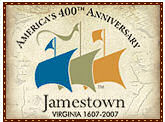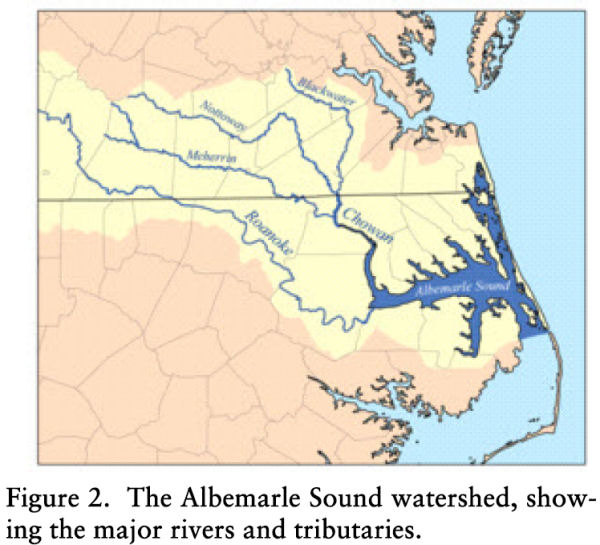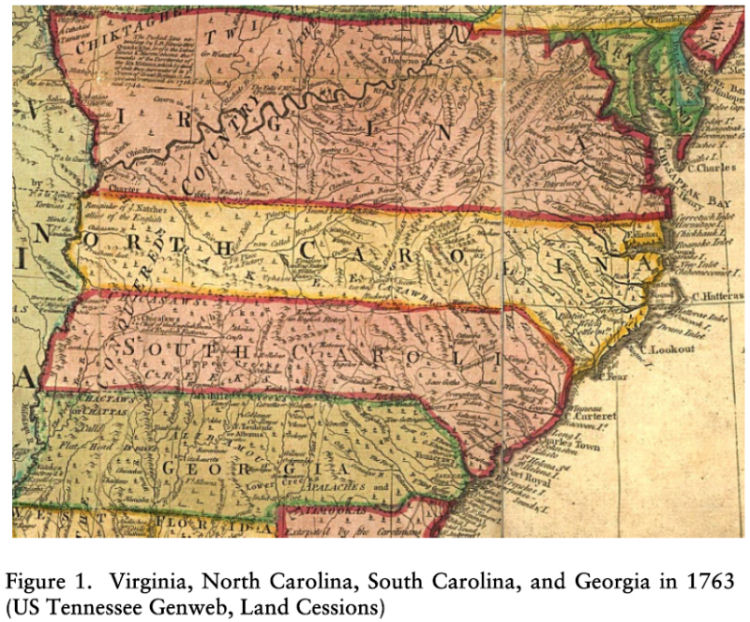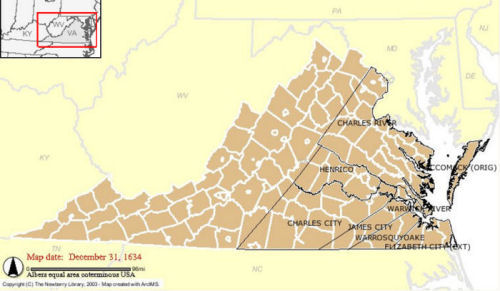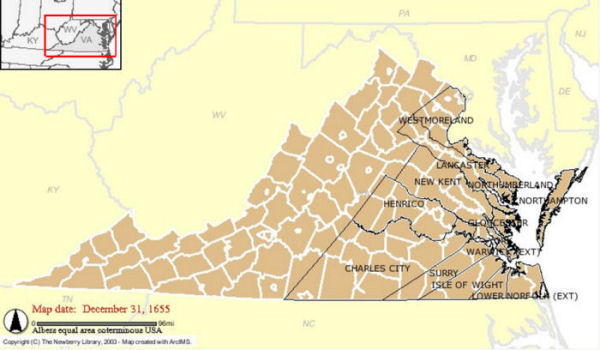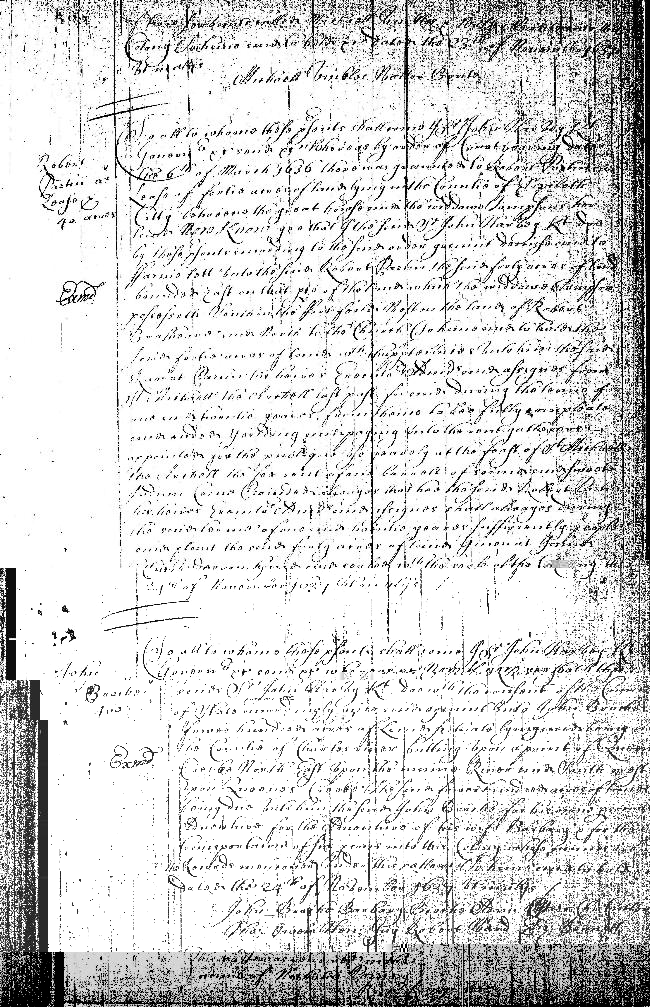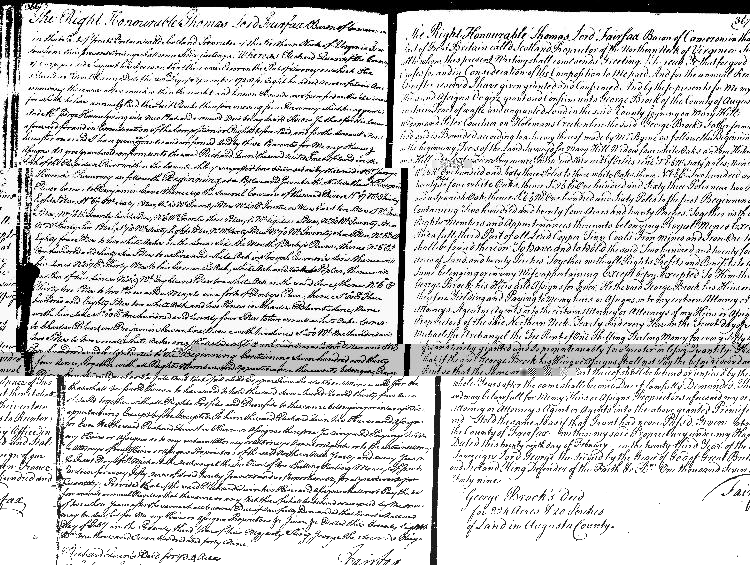1619, Thomas Flint his muster -
John Brock age 19 in the Bona Nova (p. 259). Was
he the same John Broche granted two patents on 24 Nov 1637?
(1) for 400 acres butting upon a point of Queens Creek, for transporting
himself, his wife Barbara Brocke and six other persons to the
Colony; and (2) 300 acres bounded by a swamp by the Indian
Cabin, lying upon Queens Creek, for transporting six persons
to the Colony at his own expense. On 16 Sep 1639, he was granted
a patent for 300 acres butting upon Queenes &c. at the head
of the Creek with the Maiden Swamp, for having transported five
persons into the Colony. This John Brocke has been proven to
be a French Huguenot.
In Apr 1638 John Broche, surgeon,
"freely bestowed upon my godson John Major, sonne of Richard
Major of Queens Cr., boate right, age 3 3/4 yrs, one cow one
heifer and one yearling, etc., to be delivered when he is 18
yrs." In May 1638, he assigned his 400 acres in Charles
River Co. to Nicholas Jarnes.
In Nov 1669 he was in New Kent
Co., when "50 acres granted to John Brocas, decd.,
was by inquisition patented by the Deputy Escheater to Jno. Broccus;
and 1800 ac. granted by John Broche decd. was by inquisition
patented to Capt. William Bassett by the Deputy Escheater on
10 Nov 1669. VA Land Office Patents No. 6, 1666-1679 (pt.1 &
2 p.1-692), p. 248 (Reel 6).
Use of the term Escheat (patenting
his land to Capt. Bassett) indicates John Brock/Broche/Brocus
died without heirs, except for the bequest to his godson John
Major.
Early Huguenots in Virginia
Huguenots came to Virginia
as early as 1620, when Elias La Guard, James Bonnall and David
Poole settled in Elizabeth City. In the 1630s Nicholas James,
John Broche, William Savary, Nicholas Martiau, Giles Tavernor,
John Vallet, and John Galliott settled in what is now York County.
Also at that time, many French names appear in the upper County
of New Norfolk. More French settlers came over the next three
decades, settling in Lower Norfolk, Princess Ann and Isle of
Wight Counties.
|
|
|
Another source says, "It
turns out that our progenitor was a French Huguenot, who migrated
to Virginia in 1634. He was John BROCHE, a surgeon. Over the
years his surname, BROCHE, gradually evolved in BROOKS."
|
|
|
|
1622 servant William
Brock, 26, came on the Margaret May;
16 Feb 1623, William
Brocke listed on "The List of Names: Of the Living in
Virginia" (p. 173);
22 Jan 1624, William
Brock at Richard Bigg's Muster of the Inhabitants of West
and Sherley Hundred, Charles City Co. (p. 25).
Logically, if William Brock
b. ca 1596 survived, he should have obtained a land patent much
earlier than the one granted to a William Brock in Lower
Norfolk Co., VA, in 1664. He had two patents, the first in 1670
for 420 acres, the second for 100 acres for transporting two
persons to the Colony).
On 27 Sep 1680 William
Brock was granted a patent for 1000 acres in the parish of
Lynhaven at the fresh ponds, to the Southward of Rudee - Bounded
&c. 350 acres of it in the Dam neck at the head of the fresh
ponds for 1000 acres).
So, it seems doubtful they
were one and the same man.
A WILLIAM BROCK was granted
a patent on 2 May 1713
VA PATENT in Princess Anne Co., VA, for 254 acres at a place
called and known by the name of the Dam neck Joining on the fresh
pond alias white marsh? Descendants say he was b. 1694 in Spotsylvania
Co., VA; md. Mary Carter, and d. 29 Jan 1768 in Spotsylvania
Co.
|
1635 Apr 27, Richard
Brocke, age 31, carpenter, transported to New England
on Elizabeth Ann (p. 70) [colony not stated].
3 Dec 1689, At a Vestry held at ye Church of St. Peter's parish,
in ye behalf of ye s'd parish ... It is ordered y't Rich.
Brock for ye future do pay no parish Levy.
|
Two men named George
Brocke and George Broche were imported (by two different
men) to Virginia in June 1666 -- the first, to Lancaster Co.,
and the second, to "Rappahannock River." A few years
often passed before the transporter applied for and was granted
a patent, listing those he transported. The patent of course
showed where his land was, but not where his transportees settled.
In 1650 a William Brocas also had land on the Rappahannock River,
1,750 acres in two patents. This is part of the area of Virginia
known as the Northern
Neck, lying between the Potomac and James Rivers.
It was not unknown for
a man to "double dip," claim transporting the same
person twice to get more or better land.
Patents went to "free
men" only, not to those in servitude to pay back the cost
of their transportation.
|
Sources:
The Original Lists of Persons of Quality: Emigrants, Religious
Exiles, Political Rebels, Serving Men Sold for a Term of Years;
Apprentices; Children Stolen; Maidens Pressed; and Others Who
Went from Great Britain to the American Plantations 1600-1700,
By Great Britain Public Record Office , edited by John Camden
Hotten, London, 1874 [known as "Hotten's List"].
The Parish
Register of St. Peters, New Kent Co., Va., from 1680-1797. National
Society Colonial Dames of America in Virginia, 1904, as Parish
Registers Series 2; reprinted 1988 and republished 1988 and 2004
by Southern Historical Press, Greenville, SC.
|
